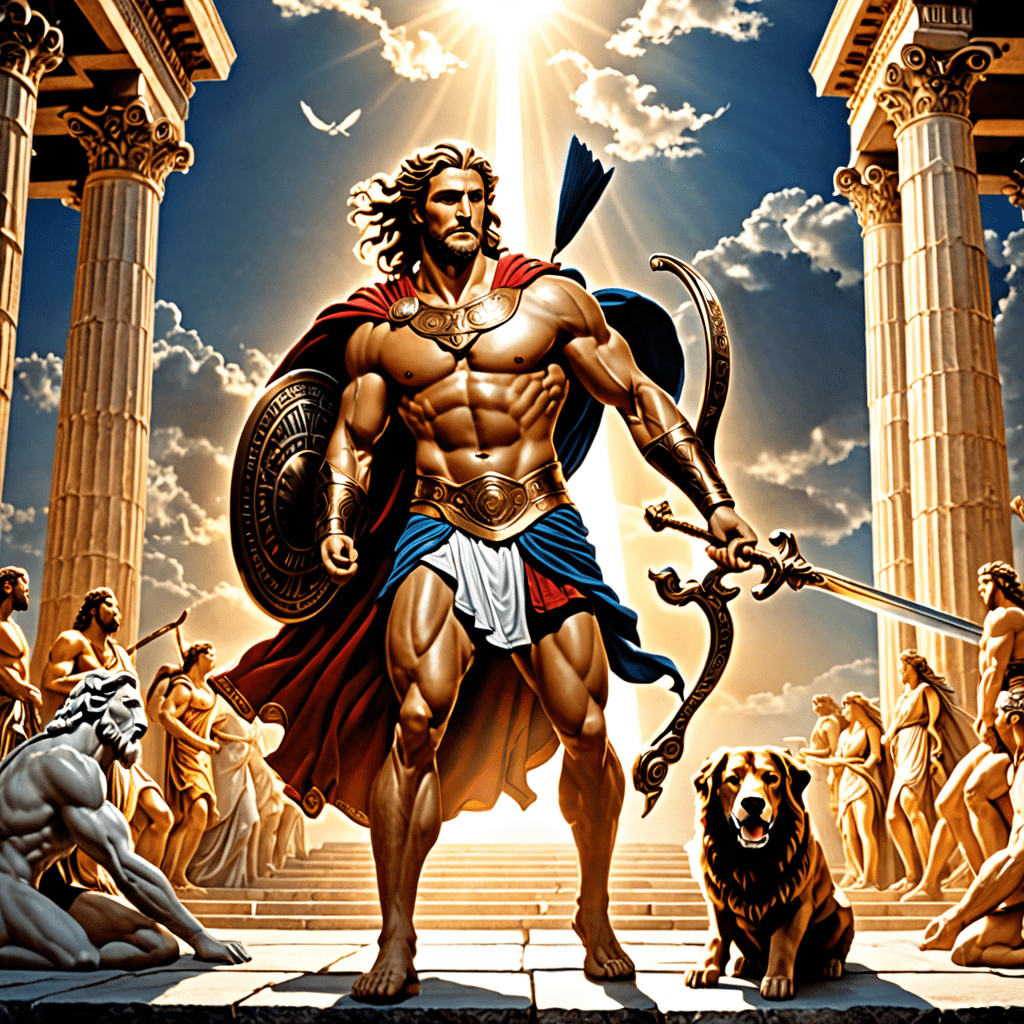Korean Totem Poles: The Legend of Jangseungnam
1. Guardian Spirits of the Village: The Purpose of Jangseungnam
Imagine a towering wooden figure standing at the entrance of a village in Korea. This is no ordinary statue; it is a Jangseungnam, a Korean totem pole that has guarded villages and protected people for centuries. These mystical figures are believed to be powerful guardians, warding off evil spirits and ensuring the well-being of the community.
The Jangseungnam plays a crucial role in Korean folklore. They act as protectors, ensuring the safety and prosperity of the villages. They are often erected at village entrances, crossroads, or important locations, serving as a symbolic boundary between the human world and the spirit world. This powerful symbolism allows them to act as deterrents against malevolent forces.
Villagers believe that the Jangseungnam's presence brings peace and harmony to their community. They are seen as a symbol of strength, resilience, and guardianship, providing a sense of security and belonging. The Jangseungnam's presence instills a sense of hope, reminding villagers of their connection to their ancestors and the protective forces that surround them.
2. More Than Just Wood: Symbolism and Meaning in Jangseungnam Art
The Jangseungnam is more than a simple wooden figure; it is a complex work of art infused with deep meaning and symbolism. The intricate carvings, vibrant colors, and distinct features on each Jangseungnam tell a story of protection, fertility, and the interconnectedness of life.
One of the most striking features of a Jangseungnam is its exaggerated size and imposing presence. The Jangseungnam's height is symbolic of its power, while its broad shoulders and strong stance represent the strength and resilience of the community it protects. Its large eyes are believed to be able to see all, watching over the villagers and keeping them safe from harm.
The Jangseungnam often features exaggerated male and female genitalia, emphasizing the importance of fertility and renewal in Korean culture. These symbols represent the life force and the cycle of birth, death, and rebirth, reminding villagers of the constant flow of life.
The Jangseungnam is often adorned with intricate carvings of mythical creatures, animals, and plants. These carvings represent various aspects of Korean mythology and belief systems. For example, the tiger symbolizes strength and courage, while the dragon represents fertility and wisdom. The inclusion of these symbols enhances the Jangseungnam's power and reinforces its protective role.
3. The Legend of Jangseungnam: A Story of Protection and Sacrifice
The Jangseungnam's origins are shrouded in legend, but one popular story tells of a brave warrior who sacrificed himself to protect his village from a deadly plague. The warrior's spirit was said to have become the first Jangseungnam, standing guard over the village and protecting it from harm.
This story highlights the Jangseungnam's role as a protector, not just against physical threats, but also against spiritual and emotional harm. The story of the warrior's sacrifice embodies the spirit of selflessness, reminding villagers of the importance of working together for the greater good.
Another legend tells of a Jangseungnam that was erected to ward off an invading army. The Jangseungnam's powerful presence and its connection to the spiritual world were said to have weakened the invaders, allowing the villagers to protect their territory. This story reflects the Jangseungnam's deep connection to the land and its people, illustrating its power to protect against physical and spiritual threats.
4. The Mythical Figures: Exploring the Symbolic Representations in Jangseungnam
The Jangseungnam often features stylized figures that are deeply rooted in Korean mythology. These figures are not simply decorative elements but rather convey important messages and beliefs. Let's explore some of the most common representations:
- The Sun and Moon: The sun and moon are often depicted together on the Jangseungnam, symbolizing the eternal cycle of life and death, day and night. They also represent male and female energy, emphasizing the importance of balance and harmony.
- The Tiger: The tiger is a powerful creature in Korean mythology, representing strength, courage, and protection. Its presence on the Jangseungnam serves as a reminder of the village's resilience and ability to overcome challenges.
- The Dragon: The dragon is a benevolent creature in Korean mythology, often associated with water, fertility, and wisdom. Its inclusion in the Jangseungnam represents the village's connection to the natural world and the importance of preserving life.
- The Phoenix: The phoenix is a symbol of rebirth and renewal, representing the cycle of life and the ability to overcome adversity. Its presence on the Jangseungnam instills hope and reminds villagers that even in difficult times, there is always the potential for new beginnings.
5. The Role of Gender in Jangseungnam: Male and Female Guardians
The Jangseungnam often depicts both male and female figures, representing the duality and balance essential in Korean culture. While the male figures are usually depicted as powerful warriors or protectors, the female figures are often associated with fertility and nourishment.
The male Jangseungnam stands as a guardian, protecting the village from external threats. He embodies strength and courage, symbolizing the village's ability to defend itself from harm. The female Jangseungnam embodies the nurturing and life-giving forces of nature, representing the village's ability to thrive and grow.
The male and female figures, standing together, symbolize the interconnectedness of life and the importance of balance between masculine and feminine energies. They represent the harmonious relationship between the village and the natural world, reminding villagers of their roles in maintaining this balance.
6. Jangseungnam and the Cycle of Life: Fertility and Renewal in Korean Mythology
The Jangseungnam stands as a reminder of the continuous cycle of life, death, and rebirth that is central to Korean mythology. The exaggerated representations of male and female genitalia on the Jangseungnam symbolize fertility and the renewal of life. These figures represent the vital forces of nature, the interconnectedness of life, and the importance of maintaining balance in the natural world.
The Jangseungnam's presence is believed to bring good fortune, abundant harvests, and healthy children. It reminds villagers of the importance of honoring the cycles of nature and respecting the delicate balance between life and death. The Jangseungnam embodies the belief that death is not an end but a transition, a necessary part of the ongoing cycle of life.
The Jangseungnam also serves as a reminder to cherish each day and to appreciate the beauty and fragility of life. The intricate carvings and vibrant colors on the Jangseungnam reflect the joy and wonder of the natural world, reminding villagers to find beauty and meaning in their daily lives.
7. The Evolution of Jangseungnam: From Ancient Rituals to Modern Art
The Jangseungnam's origins can be traced back to ancient shamanistic practices and ancestor worship. Over the centuries, the Jangseungnam has evolved and adapted to changing societal values and cultural influences. Initially, they were simple wooden poles with minimal carvings. However, as Korean art and culture developed, the Jangseungnam became more elaborate and intricate.
Today, the Jangseungnam continues to evolve. While traditional forms remain popular, contemporary artists are incorporating modern materials and techniques into their creations. Some artists have created abstract Jangseungnam sculptures that explore themes of globalization, modernization, and the challenges of preserving cultural traditions in a rapidly changing world.
These modern interpretations demonstrate the enduring power of the Jangseungnam as a symbol of Korean heritage. Even as society evolves, the Jangseungnam's fundamental message of protection, fertility, and the interconnectedness of life remains relevant.
8. Theories on the Origin of Jangseungnam: Shamanistic Practices and Ancestor Worship
The exact origins of the Jangseungnam are still debated among scholars. However, many believe that the Jangseungnam evolved from ancient shamanistic practices and ancestor worship that were prevalent in Korea.
Shamans, who acted as intermediaries between the human and spirit worlds, often used wooden poles as a means of communicating with spirits. These poles may have served as physical representations of spirits, or as a means of channeling spiritual energy. Ancestor worship, a prominent element in Korean tradition, involved honoring and appeasing the spirits of deceased ancestors.
Over time, these practices may have merged to create the Jangseungnam. The Jangseungnam came to represent the collective spirit of the ancestors, a powerful guardian force protecting the village from harm.
9. Jangseungnam in Contemporary Culture: A Symbol of Korean Heritage
Today, the Jangseungnam is a powerful symbol of Korean heritage, representing the country's rich cultural history, folklore, and traditions. The Jangseungnam is often featured in Korean art, literature, and film, reminding people of their shared cultural identity and the importance of preserving their ancestral traditions.
The Jangseungnam is also a popular tourist attraction, drawing visitors from all over the world. Visitors are drawn to the Jangseungnam's unique beauty, its connection to Korean folklore, and its symbolic representation of the country's cultural heritage.
10. The Enduring Legacy of Jangseungnam: A Connection to the Past and a Hope for the Future
The Jangseungnam's enduring legacy lies in its ability to connect people to their past and inspire hope for the future. It represents the resilience of the Korean people, their ability to overcome adversity, and their commitment to preserving their cultural heritage.
The Jangseungnam serves as a reminder that even in a rapidly changing world, there are enduring values and traditions that can provide strength, guidance, and a sense of belonging. It reminds us of the power of storytelling, the importance of honoring our ancestors, and the need to protect our shared cultural heritage.
The Jangseungnam continues to inspire artists, scholars, and ordinary people alike, reminding us of the enduring power of tradition and the importance of finding meaning and connection to our past. As the world continues to evolve, the Jangseungnam stands as a powerful symbol of hope and resilience, reminding us of the strength that can be found in our shared history and cultural identity.
FAQ
Q: What is the difference between a Jangseungnam and a Jangseung?
A: Jangseungnam is a specific type of Jangseung, a Korean totem pole. The term "Jangseung" refers to any type of wooden pole, pillar, or figure that is erected as a guardian spirit, while Jangseungnam specifically refers to the type of Jangseung that portrays a male figure.
Q: What is the significance of the colors used on Jangseungnam?
A: The colors used on Jangseungnam often have symbolic meaning. For example, red represents energy, strength, and protection, while blue represents serenity and wisdom. The combination of colors is often chosen based on the specific role and meaning of the Jangseungnam.
Q: Where can I see Jangseungnam in Korea?
A: Jangseungnam are found throughout Korea, particularly in rural villages and at the entrances of traditional temples. Some notable examples can be found in the villages of Bukchon Hanok in Seoul, Andong Hahoe Folk Village, and the Jeju Island Folklore and Natural History Museum.
Q: Are Jangseungnam still erected today?
A: While Jangseungnam are not erected as frequently as they were in the past, they are still erected in some villages and temples. The practice remains alive as a way to honor tradition, protect the community, and connect with the spiritual world.
Q: What is the importance of Jangseungnam in Korean culture?
A: Jangseungnam are an important part of Korean culture, representing a rich tapestry of folklore, mythology, and spiritual beliefs. They serve as powerful reminders of the connection between humans and the spirit world, and they embody the values of protection, fertility, and the ongoing cycle of life.



